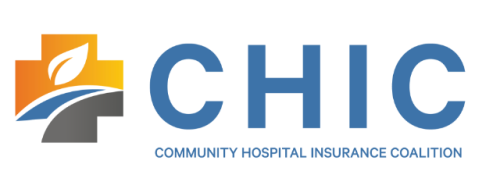IRS Issues Affordability Percentage Adjustment for 2021
“Supreme Court to Hear Arguments in Lawsuit Challenging ACA’s Constitutionality This Fall”
Employers Have Flexibility with Contraceptive Coverage Plan Designs
DOL Seeks Input on FMLA Regulations and Paid Leave
IRS Issues Affordability Percentage Adjustment for 2021
The Internal Revenue Service (IRS) has released Rev. Proc. 2020-36, which contains the inflation adjusted amounts for 2021 used to determine whether employer-sponsored coverage is “affordable” for purposes of the Affordable Care Act’s (ACA) employer shared responsibility provisions and premium tax credit program. As shown in the table below, for plan years beginning in 2021, the affordability percentage for employer mandate purposes is indexed to 9.83%. Employer shared responsibility payments are also indexed.
[table id=23 /]
*Section 4980H(a) and (b) penalties 2021 are projected.
**No employer shared responsibility penalties were assessed for 2014.
Under the ACA, applicable large employers (ALEs) must offer affordable health insurance coverage to full-time employees. If the ALE does not offer affordable coverage, it may be subject to an employer shared responsibility payment. An ALE is an employer that employed 50 or more full-time equivalent employees on average in the prior calendar year. Coverage is considered affordable if the employee’s required contribution for self-only coverage on the employer’s lowest-cost, minimum value plan does not exceed 9.83% of the employee’s household income in 2021 (prior years shown above). An ALE may rely on one or more safe harbors in determining if coverage is affordable: W-2, Rate of Pay, and Federal Poverty Level.
If the employer’s coverage is not affordable under one of the safe harbors and a full-time employee is approved for a premium tax credit for Marketplace coverage, the employer may be subject to an employer shared responsibility payment.
Note that as of January 1, 2019, the individual mandate penalty imposed on individual taxpayers for failure to have qualifying health coverage was reduced to $0 under the Tax Cuts and Jobs Act, effectively repealing the individual mandate. Although there is currently a lawsuit challenging the constitutionality of the ACA due to this change to the individual mandate penalty, which is schedule for oral argument before the United States Supreme Court this fall, the employer mandate has not been repealed and the IRS continues to enforce it through Letter 226J. The IRS appears to still be enforcing reporting for 2017 and has not sent letters regarding calendar year 2018 reporting at this time.
Next Steps for Employers
Applicable large employers should be aware of the updated affordability percentage for plan years beginning in 2021. Although the affordability percentage has not increased significantly from 9.78% to 9.83%, employers should consider it along with all other relevant factors when setting contributions.
“Supreme Court to Hear Arguments in Lawsuit Challenging ACA’s Constitutionality This Fall”
This fall, the U.S. Supreme Court is expected to hear oral arguments in Texas v. Azar, the lawsuit arguing that the Affordable Care Act (ACA) is unconstitutional.
In June 2020, President Donald Trump’s administration asked the Supreme Court to strike down the entire ACA due to the elimination of the individual mandate penalty.
The administration’s argument hinges on Congress’ decision in 2017 to reduce the individual mandate penalty to zero. According to the White House, removing that provision invalidated the entire law.
If the remaining provisions of the ACA are upheld without the individual mandate penalty, then little will change from the current state of affairs.
If the ACA is struck down, nearly everyone in the country will be affected, but the specific impact is unknown.
The ACA’s provisions remain in place while the case is being considered.
It is expected that the Supreme Court will issue its ruling in spring or summer of 2021. Stay tuned for further updates.
DOL Seeks Input on FMLA Regulations and Paid Leave
Employers Have Flexibility with Contraceptive Coverage Plan Designs
In July, the U.S. Supreme Court upheld expanded exemptions to the ACA’s contraceptive mandate. Under these exemptions, plan sponsors that object to providing contraceptive coverage based on sincerely held religious beliefs or moral convictions will not be penalized for failing to include contraceptive coverage in the plan’s benefits.
The ACA requires non-grandfathered health plans to cover certain women’s preventive health services without cost sharing, including all FDA-approved contraceptives. Religious exemptions apply to certain churches, houses of worship, and other church-affiliated institutions,which allows them to choose not to contract, arrange, pay or refer for any contraceptive coverage.
In its 7:2 decision, the Supreme Court ruled that the Trump administration had the authority under the ACA to provide exemptions from the contraceptive mandate for employers with religious and conscientious objections.
As a result, additional employers may now be able to opt out of providing the ACA-mandated contraceptive coverage. However, insurance carrier requirements and state law mandates may also affect an employer’s options for these benefits.


